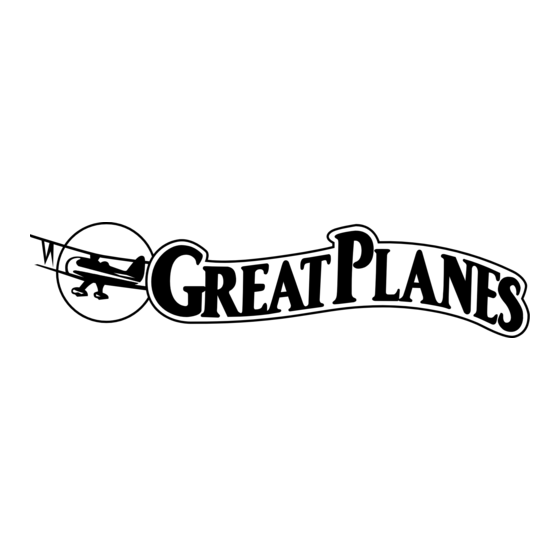GREAT PLANES Wright Flyer Buku Petunjuk - Halaman 11
Jelajahi secara online atau unduh pdf Buku Petunjuk untuk Mainan GREAT PLANES Wright Flyer. GREAT PLANES Wright Flyer 16 halaman. Almost ready to fly electric powered r/c airplane

Install the Rudders
1. The rudders can be attached with the included double-
sided tape or with 6-minute epoxy. Do not use CA adhesive
as it will damage the foam rudder. The double-sided tape will
allow the rudder to pop off if it hits an object. The above
photo shows only the left rudder in place.
Final Assembly
1. Install the receiver box on the top of the bottom wing.
Install your receiver in the receiver box. The above photo
shows a Futaba
®
R114F receiver. For this installation it was
necessary to trim some of the plastic to clear the servo leads.
2. The Electronic Speed Control (ESC) can be secured
to one of the fuselage cross braces with a small nylon
tie-wrap. Plug the motor wires into the ESC. Note that the
motor wires have also been secured with tie-wraps. The
switch can be held in place with 6-minute epoxy or thick CA.
3. Secure the battery in the battery holder under the
canards with the rubber bands provided.
4. Route the battery wire to the wire from the ESC, which
has been secured with a tie-wrap.
5. The receiver antenna can be routed along the sides of
the fuselage, around the front and secured with clear tape.
GET THE MODEL READY TO FLY
Check the Control Directions
IMPORTANT: Whenever connecting the battery, always
hold onto the fuselage incase the motors accidentally
receive power and the propellers turn.
1. Turn on the transmitter, connect the battery to the
speed control and turn the receiver on. Center the trims on
the transmitter. If necessary, remove the servo horns from
the servos and reposition them so they are centered.
Reinstall the screws that hold on the servo horns.
2. With the transmitter and receiver still on, check all the
control surfaces to see if they are centered. If necessary,
adjust the clevises and pushrods to center the control
surfaces.
3. Be certain the ailerons, elevator and motors respond
in the correct direction as shown in the diagram that follows.
If any of the controls respond in the wrong direction, use the
reversing in the transmitter to reverse the servos connected
to those controls. Be certain the control surfaces have
remained centered. Adjust if necessary.
11
